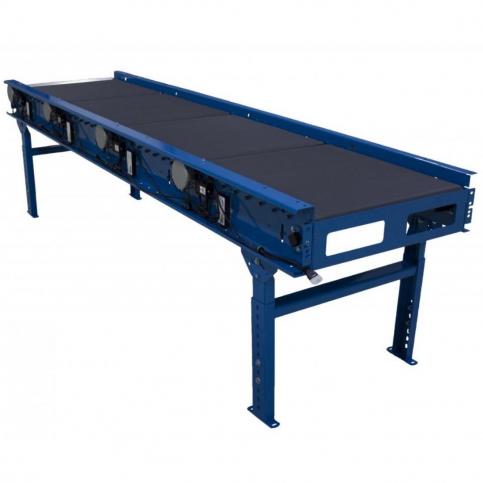All conveyor parts need adequate maintenance, but special attention should be paid to conveyor belts. They are arguably the one component of a conveyor that comes into most contact with foreign matter and experiences the most stress, creating the potential for contamination or belt damage.
If not maintained properly, you could experience conveyor belt failure which will result in costly downtime.
First, let us identify the three most common problems experienced by conveyor belts: mistracking, incorrect tension, and damage to conveyor belt lacing. To mitigate these three issues, you need to make sure your overall conveyor system is operating well, in addition to maintaining the conveyor belt.
Here’s how you can keep your conveyor running efficiently:
1. Lubricate key components
Belt conveyors consist of pulleys, bearings, and in most cases roller chains to drive the pulleys. These moving parts need to be lubricated regularly in order to reduce unnecessary friction. Not only will this increase the overall energy efficiency of your conveyor system, but it can also help curb potential damage to your conveyor belt.
2. Clean your conveyor regularly
It is not just the conveyor belt itself that should be cleaned regularly. Products on the conveying line can sometimes spill harmful fluids that can lead to stickiness, corrosion, or slipperiness, which are all detrimental to the operations of your conveyor and can result in belt damage. Conveyor belts are also housed in factory settings which expose them to other unwanted elements such as dust and debris, and as such cleaning is a vital maintenance procedure.
3. Check for loose parts
Conveyor belt issues can sometimes be attributed to loose or broken conveyor parts that lead to faulty operations. Make sure you keep an eye out for loose or broken components so that you can quickly repair or replace them. Leaving these components unattended can result in severe conveyor damage in the future.
4. Belt Tracking
To properly track your conveyor belt, refer to our guide here.
Once you have taken care of all these factors, you should test your conveyor to see if the conveyor belt is functioning properly. We recommend launching the conveyor in both its reversed and correct position a few times to get a more accurate picture of whether or not everything is in order. Then, perform the same tests with load added.
These prudent steps should help you maintain overall conveyor health, which in turn will lead to better conveyor belt performance and fewer issues in the long run. If you have specific concerns about your conveyor, the technicians at Norpak Handling are always ready to lend our expertise and help you come up with a solution that works. Give us a call today to learn more about our products and services.










